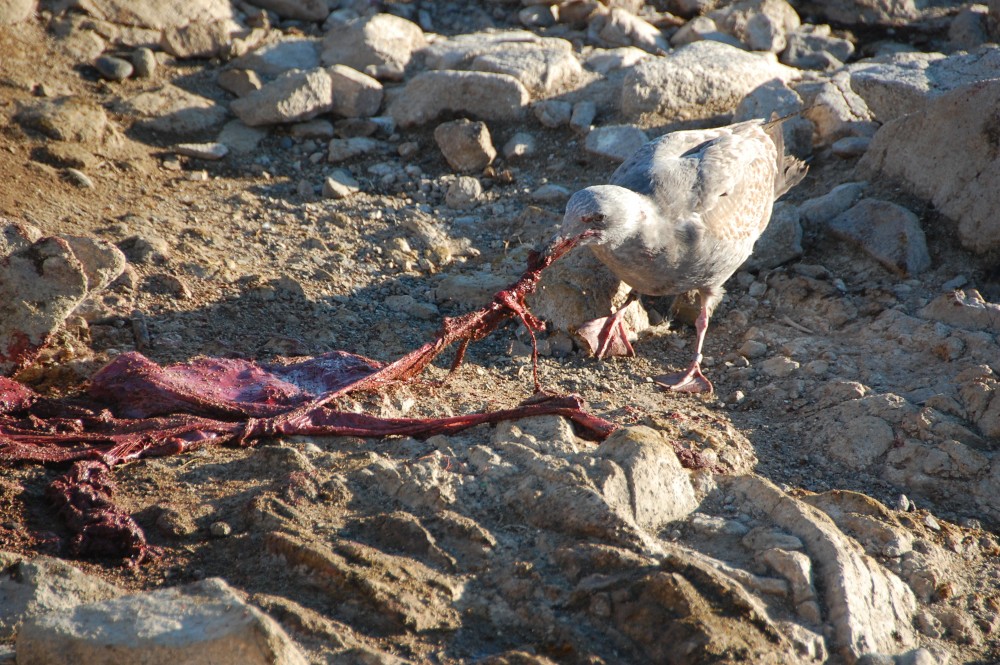Hello from Hatfield Marine Science Center! This is Justin bringing you the latest and greatest in Gray Whale news. But first, let me fill you folks in with some info about me. I am an undergraduate student, transitioning into my senior year, with Oregon State University’s Fisheries and Wildlife Department. In addition to my major, I am also minoring in statistics; crazy right? I have hopes and dreams of working in Marine Ecology, and I believe working on this Gray Whale project is a fine start! Which means, this summer, I have had the fortunate opportunity to work alongside the lovely Florence van Tulder, the mastermind behind the project, as well as Cricket and Sarah, the other two charismatic interns.

As we were wrapping up our two week stint in Port Orford, We observed the Gray Whales exhibiting some interesting behavior; they seemed to move from kelp patch to kelp patch, almost as if they were searching for something. What could be hiding under the luscious stands of Nereocystis luetkeana, otherwise known as bull kelp? Well, with the presence of defecation ( whale droppings) left behind from diving whales near many of the floating kelp patches, one culprit came to mind- mysid shrimp. Mysid shrimp are believed to be a primary prey source of the Gray whales.

Naturally, my curiosity got the best me and I ended up spending hours on end conducting literature searches and looking for bathymetry maps, thanks to Florence. All joking aside, I asked Florence if we could use our fancy Theodolite to assess or roughly map the distribution of the kelp patches. We would create polygonal shapes of the kelp on a map and observe how the whales move with respect to the kelp. The idea being, to get a better of picture of the relationship between the whales and the kelp, if any relationship exists at all. It is still a work in progress, due to our survey sites getting all kinds of “fogged” up. When the kinks are worked out and we have some useful visual data, we will post an awesome photo.


Port Orford didn’t just bring us sweet whales, it brought the heat! Temperatures were up to almost the nineties the last week in July! We beat the heat with plenty of hydration and sun block and the predicable wind patterns became a savior on those sweltering days giving us temporary relief. The heat seemed to tease out other critters as well. We saw a variety of birds, from turkey vultures, Peregrine Falcons, Ospreys, Bald Eagles, and even Egrets! In the water we saw baby Harbor seals, and some bonus River Otters.

In more recent news, August 8th marked our first full month of surveying between our two whale hotspots. However, the term “hotspot” doesn’t always seem to be fitting. This past week has been a tough one for the team and I up in Boiler Bay due to less than optimal weather conditions and our survey site has been exposed to an abnormal cycle of fog. Our friendly “neighborhood” grays have been a bit sparse, and yet, we have had Humpback Whales grace us with their presence and these whales have been spotted during several survey days this week! ( In the tradition of opportunistic data, we even tracked one of them.)

This summer has been very fun because not only do we get to watch whales every day, but when we are in Boiler Bay, we have the opportunity to meet fascinating people from all over the world! The positive support for the project coming from the community is quite a nice touch to our days in the field. If you are ever in the neighborhood, stop by and say hello, maybe share a whale’s tale or two!






































































